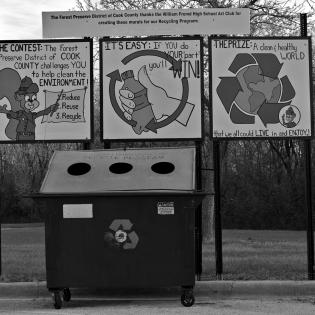Digging Up the Facts
Young people explore what it means to be an environmentalist. They work in small groups to research the facts and possible solultions related to an environmental issue. The ultimate goal of the unit is to empower young people to share their knowledge (talent) and make others aware of environmental issues for the common good.
The learner will:
- research an environmental issue through at least three sources and document at least ten facts about it, including potential solutions.
Send home a letter requesting recycled materials that can be reused for making puppets. See handout, Family Letter.
- Environmental sites for kids http://www.ivyjoy.com/rayne/environmental.html
- EPA Student Center https://www.epa.gov/students
- EPA Recycle City http://www.epa.gov/recyclecity/mainmap.htm
- Kids for Saving Earth https://kidsforsavingearth.org/
- VanAllsburg, Chris. Just a Dream. Houghton Mifflin, 1990. ISBN: 0395533082
Instructions
Anticipatory Set:
Read the story, Just a Dream, by Chris VanAllsburg. During the reading, stop periodically to check for understanding.
Define environmentalist (a person who is concerned with or advocates the protection of the environment) and philanthropist (a person that gives and shares time, talent and/or treasure for the common good). Discuss whether Walter becomes an environmentalist. Is he a philanthropist? Is a person who teaches others about environmental issues a philanthropist?
Discuss what the "call to action" of the book is.
Display some of the websites in the Bibliography to get a broad idea of environmental issues. Read about Clint Hill and the organization called "Kids for Saving Earth." Discuss the impact that kids can have. Ask young people to think about which of the ideas spark their interest. List some of their ideas on a chart (alternative energy, damage to animal habitats, water pollution, waste of natural resources, overuse of land, too much garbage)
What might persuade people to learn about and take action for an environment issue? (Examples: facts about the issue, hearing stories, understanding long-term impact, appealing to emotion)
Working in groups on an issue area, young people research an issue, gathering at least ten facts about the issue as well as information about the work and needs of local resources. The research may be through print resources (books, video, and Internet), interviews with experts, or observing and collecting data. Encourage them to use at least three different sources.
Taking Action to Share What they Learned:
The groups may write a puppet show script in which the characters see a problem and take steps to make a difference for the environment. The following lessons take them through script writing and making puppets.
Alternatively, they may make an advocacy poster about their issue.
Handouts
Philanthropy Framework
-
Strand PHIL.I Definitions of Philanthropy
-
Standard DP 01. Define Philanthropy
-
Benchmark E.1 Define philanthropy as the giving and sharing of time, talent, or treasure intended for the common good.
-
-
Standard DP 04. Operational Characteristics of Nonprofit Organizations
-
Benchmark E.1 Describe how citizens organize in response to a need.
-
-
-
Strand PHIL.II Philanthropy and Civil Society
-
Standard PCS 03. Philanthropy and Economics
-
Benchmark E.5 Recognize the wise use of resources as <i>stewardship</i>.
-
-
Standard PCS 05. Philanthropy and Government
-
Benchmark E.10 Give an example of an action by an individual or a private organization that has helped to enhance a fundamental democratic principle.
-
Benchmark E.9 Describe how philanthropic activities can bring about social change.
-
-
-
Strand PHIL.III Philanthropy and the Individual
-
Standard PI 01. Reasons for Individual Philanthropy
-
Benchmark E.4 Give an example of how citizens act for the common good.
-
-
